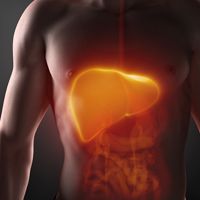Article
General Health Surveillance, Screening Important for Long-Term Liver Transplant Survival
Author(s):
Outcomes for liver transplant recipients have never been better, and long-term survival will depend on a holistic approach that includes evidence-based health surveillance by hepatologists and others to optimize screening and primary prevention in this population.

Outcomes for liver transplant recipients have never been better, and long-term survival will depend on a holistic approach to optimizing screening and primary prevention in this population, says the Mayo Clinic’s Kymberly Watt, MD. She spoke to the need for both hepatologists and primary care providers to adopt evidence-based health surveillance for long-term survivors of liver transplant on November 9, 2014 at The Liver Meeting in Boston, MA.
For liver transplant recipients who die more than one year after surgery, almost two-thirds (63.8%) will die of nonhepatic causes, while only about a quarter (23.9%) die of hepatic causes (the remainders are unknown). Liver disease recurrence rates vary by type of disease; HCV recurrence, which had been near-universal, will likely plummet as new treatments are introduced. This will result in fewer allograft failures and a likely increase in long-term post-transplant survivors.
The three most common nonhepatic causes of death are malignancy, infection, and cardiovascular disease. Screening for malignancy should be dictated by the underlying pathology that prompted transplant, as well as by the post-transplant immunosuppressive regime and the relative increased risk of particular malignancies with immunosuppressive use. Primary sclerosing cholangitis and alcoholic liver disease each carry nearly a 25% risk of non-skin malignancies post-transplant, so screening vigilance must be high in these populations. Smokers and former smokers (defined as having smoked within the past 15 years) should be screened according to guidelines for the general population, which now would include annual surveillance lung CT. Liver transplant recipients do not seem to be at greater risk for prostate and breast cancers than the general population.
Cardiovascular disease is a common cause of morbidity and mortality in the post-transplant population. The basics of lifestyle and diet intervention as both primary and secondary prevention strategies apply equally to this group. Care providers should bear in mind, however, that the post-transplant population is more likely to have a number of cardiovascular risk factors, which will raise the risk of cardiac events. According to treatment guidelines, this will change target blood lipid goals and may require more intensive therapy.
Hypertension, common post-transplant, should be addressed first by recommending a low sodium diet, increased exercise, and weight management. Providers should consider screening for obstructive sleep apnea, a frequent contributor to hypertension, and remind patients to abstain from alcohol use. Hypertensive liver transplant patients must be watched closely for proteinuria and renal function as well; hazard ratio for death climbs precipitously as estimated GFR rises in this population.
The weight gain and increased adiposity seen over time in the post-liver transplant population, in addition to contributing to risk for cardiovascular disease and hypertension, also increase the risk for metabolic syndrome and type 2 diabetes mellitus (T2DM). As for the general population, metformin is the mainstay of treatment, and treatment recommendations should follow guidelines of use of hypoglycemic agents.
The rate of osteoporosis and osteopenia is already increased pre-liver transplant, and the risk of osteopenic or osteoporotic fratures is greatest at 6-12 months after transplant. Bone density tends to rise slowly over time; however, bone density screening, with consideration for vitamin D and bisphosphonate therapy, should be part of post-transplant surveillance.
Turning to women’s health issues, Watt noted that women may use hormonal contraceptives post-transplant, with some caveats. Online resources are available to guide contraceptive prescribing. All pregnancies post-transplant are considered high risk, with documented increased risks for hypertension, pre-eclampsia, caesarian sections; however, an increased risk of birth defects has not been seen. Immunosuppressive regimes may continue with close coordination between hepatologist and obstetrician. Watt noted, though, that although some pregnancy category C immunosuppressives may be continued, the antiproliferative effects of the mTOR inhibitors create a contraindication to use in pregnancy.
Finally, Watt reviewed immunization recommendations for liver transplant recipients. Ideally, patients would be fully vaccinated prior to transplant, with special focus on bringing the patient up to date on live attenuated viruses, which should be avoided when taking immunosuppressives. These include the measles, mumps and rubella vaccine as well as varicella zoster vaccination. Family members should also be fully vaccinated and should give thought to avoiding close contact themselves after receiving live virus vaccines.




